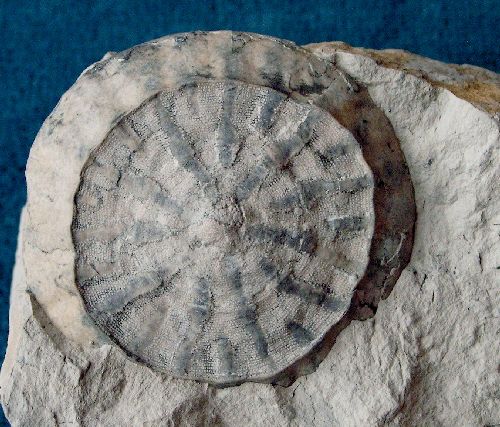
Coeloptychium agaricoides
Goldfuss 1826
Coeloptychium agaricoides is the most common Coeloptychium species in the Upper Campanian of Misburg. Typical forms of C. agaricoides appear to be lacking in the Lower Campanian.
The rim, which is conical and generally steeper than 45 degrees, is without gaps, and consists of a dense siliceous membrane. The upper surface of the sponge is plane or slighly depressed towards the center, or rarely slightly convex. On its upper side, Coeloptychium agaricoides shows radially aranged, dense bands which alternate with siliceous meshwork. Towards the rim, additional dense bands appear as intercalations. These bands cover the crests of radial folds which make up the hood, while the siliceous meshwork covers the troughs between the fold crests. The siliceous meshwork consists of two or more meshes per millimeter.
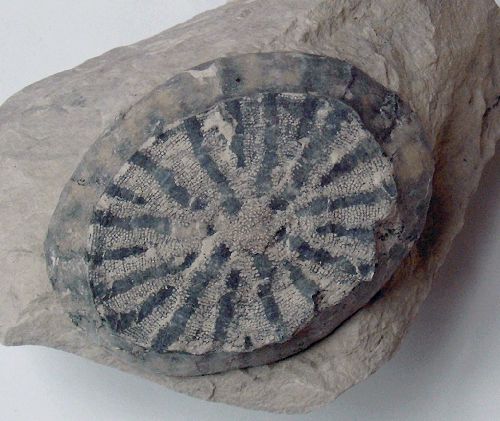
Coeloptychium agaricoides ...
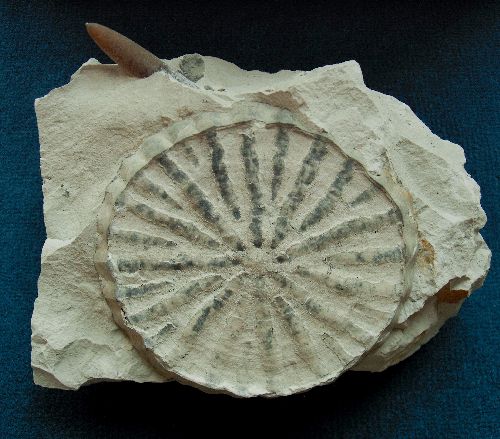
... Coeloptychium agaricoides with Belemnitella mucronata
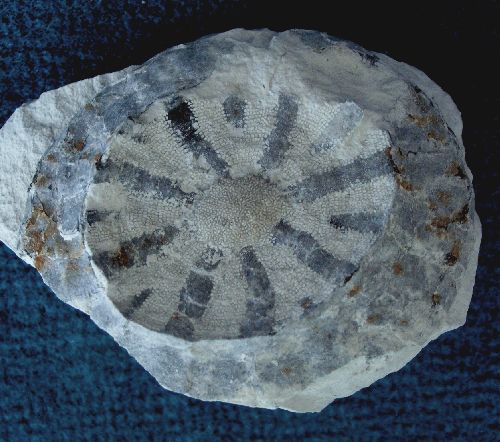
... Coeloptychium agaricoides with unusually large and well preserved central sieve plate. This sieve plate coveres the hollow stem and prevents it from becoming clogged from sinking debris.
.jpg)
Drawing of Coeloptychium agaricoides (Roemer, 1841, Plate IV, Figure 5 *), showing
(a) complete sponge with stem and roots,
(b) detail of the underside with a parietal osculum,
(c) detail of the upper side with dense siliceous bands and surficial meshwork.
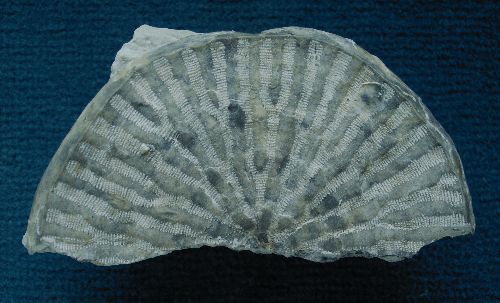
Coeloptychium deciminum
Roemer, 1841
Coeloptychium deciminum is probably restricted to the Upper Campanian (Misburg). It is a very rare species.
Coeloptychium deciminum is similar to Coeloptychium agaricoides, but has distinctly more folds and a rather thin hood. The specimen shown here is 100 mm across, but its hood is less than 10 mm thick.
.jpg)
Drawing of Coeloptychium deciminum (Roemer, 1841, Plate IV, Figure 3)
(a) split view of upper and under side.
(b) detail of surface meshwork
(c) side view, emphasizing thin hood
(d) detail of underside, showing forking fold with parietal oscula and small ostia (apertures of lychnisk meshwork).
The drawing does not show the radial bands very well, but they are mentioned in Roemer's (1841) text. According to Schrammen (1912) the bands may be more or less pronounced.
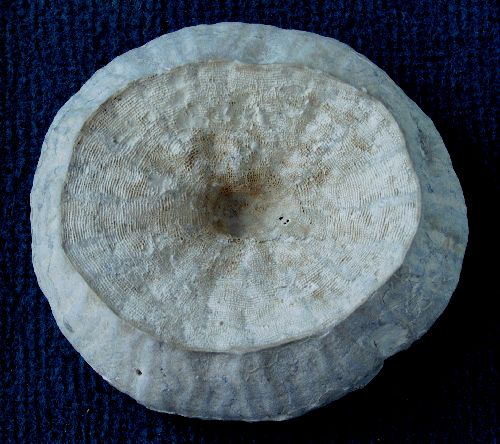
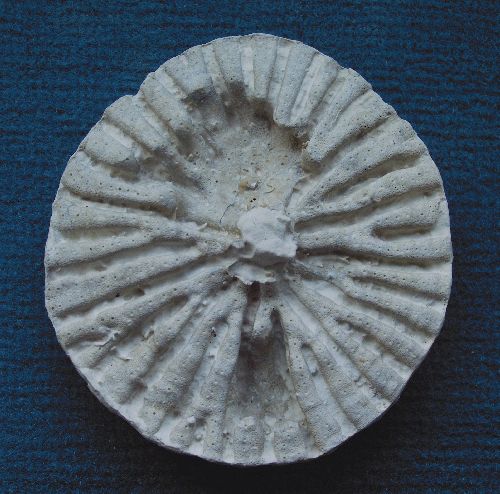
Coeloptychium sulciferum
Roemer, 1841
Coeloptychium sulciferum is restricted to the Lower Campanian (Höver), where it is the most common Coeloptychium species.
The rim consists of a dense siliceous membrane and is moderately steep and convex (hemispherical). It is without gaps, but shows slight vertical gooves (name!). The upper surface of the sponge is strongly depressed towards the center. In its center it has a sieve plate covering the hollow stem.
On its upper side, Coeloptychium sulciferum shows almost no signs of radial bands, but is covered with a continuous siliceous meshwork with predominant circular lines.
The underside of the hood is made up of forking fold troughs. (the two areas with missing folds are anomalies.) Along their hinge lines the folds show alignments of parietal oscula.

Coeloptychium sulciferum with stem.
.jpg)
Drawing of Coeloptychium sulciferum (Roemer, 1841, Plate IV, Figure 4)
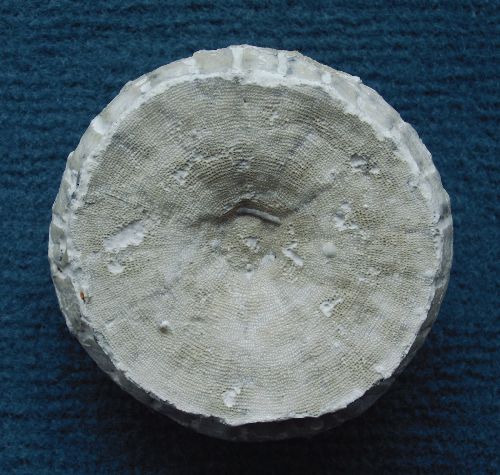
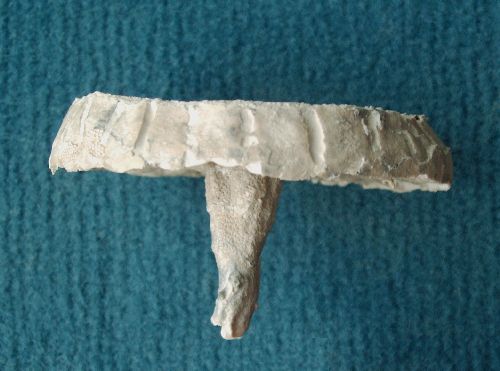
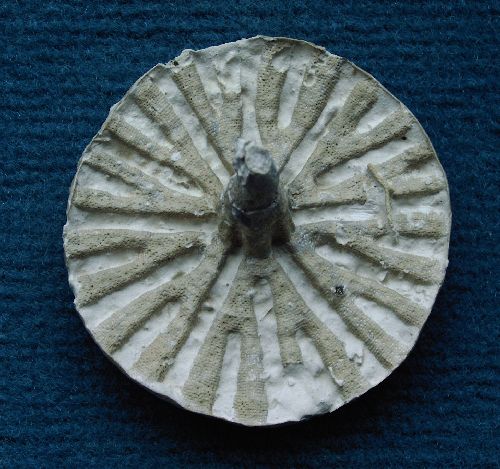
Coeloptychium incisum
Roemer, 1841
Coeloptychium incisum is restricted to the Lower Campanian (Höver) as a rare species.
The rim is very steep and consists of a dense siliceous membrane. It shows characteristic gaps (name!). The upper surface of the sponge is only slightly depressed towards the center. In its center it has a sieve plate covering the hollow stem.
On its upper side, Coeloptychium incisum shows almost no signs of radial bands, but is covered with a continuous siliceous meshwork with predominant circular lines.
The underside of the hood is made up of forking fold troughs. Along their hinge lines the folds show alignments of tiny parietal oscula.
Coeloptychium incisum is hardly exceeding 50 mm in hood diameter and hence tends to be smaller than other Coeloptychium species.
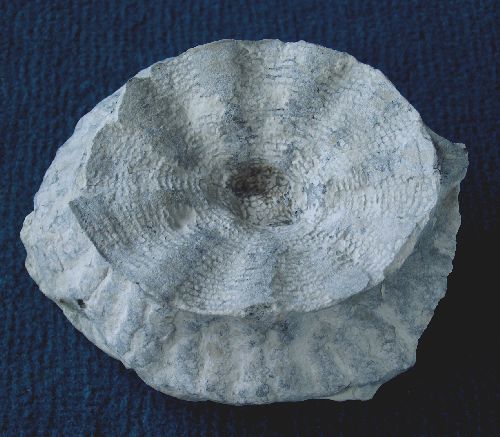
Coeloptychium princeps
Roemer, 1864
Coeloptychium princeps is a rare species, but occurs in both, the Lower and Upper Campanian. It is similar in appearance to C. agaricoides, but is distinguished by a coarser meshwork on the upper surface (1 mesh or less per millimeter), and by its greater hood thickness, i.e. higher rim. The The upper surface of Coeloptychium princeps is depressed and its rim is usually slightly concave.
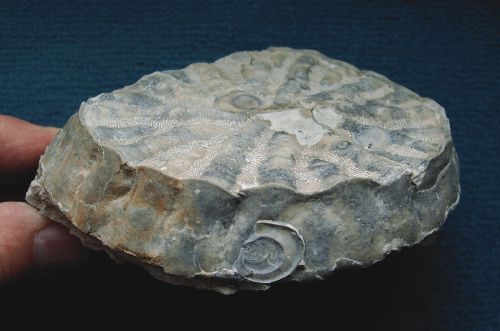
Coeloptychium rude
von Seebach, 1876
Coeloptychium rude is a very rare species in the Upper Campanian of Misburg.
It is similar in appearance to C. princeps, but is distinguished by its flat upper surface. The siliceous bands on the upper surface are elevated. Coeloptychium rude is one of the largest Coeloptychium species, reaching hood diameters up to 300 mm.
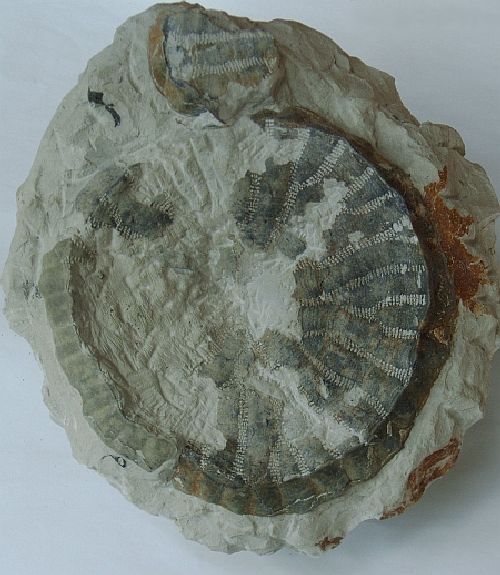
Coeloptychium seebachi
Zittel 1876
Coeloptychium seebachi is very rare and probably occurs only in the Upper Campanian.
It is one of the larger forms of Coeloptychium, with diameters reaching 300 mm, but the thickness is barely more than 20 mm. Complete specimens are unknown to the author. The ridges of C. seebachi can fork several times. The relative width of the ridges (dense siliceous bands) compared to the gridded gaps is much greater than for the other Coeloptychium species. The mesh size of the gridded sectors is approximately 1 mesh per millimeter.
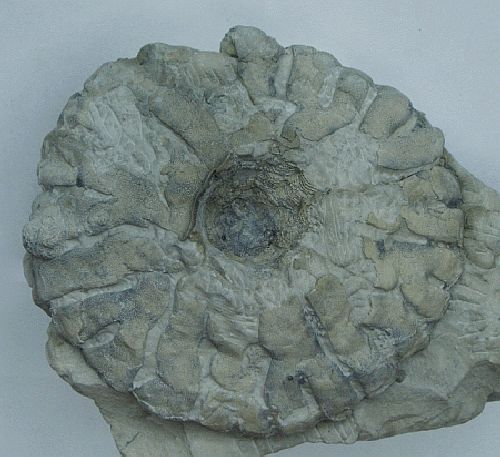
Coeloptychium lobatum
Goldfuss 1826
Coeloptychium lobatum is very rare in Upper Campanian of the Misburg area.
Coeloptychium lobatum is characterized by a very broad and flat rim, which is divided into a number of radiating and branching ridges. The area corresponding to the upper surface of C. agaricoides and C. princeps is reduced to a deep central depression (osculum) in C. lobatum, which is covered with a siliceous network (approx. 1.5 meshes per millimeter).
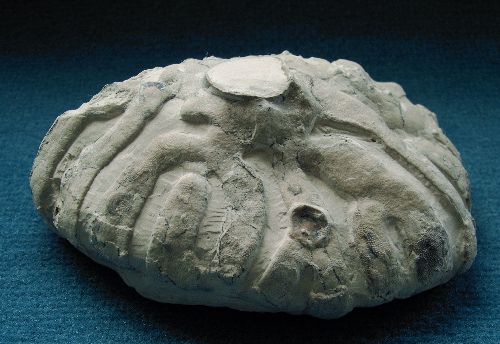
A second specimen of Coeloptychium lobatum.
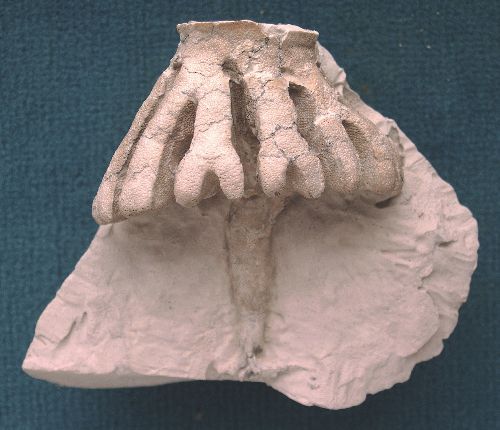
Coeloptychium lobatum with stem and roots.